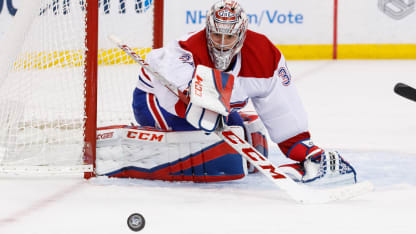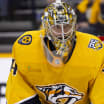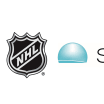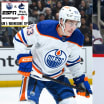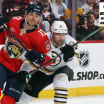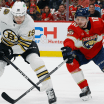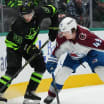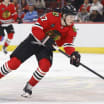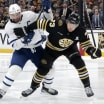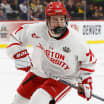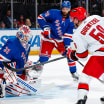Not every goalie smells it as regularly. It takes the right kind of shot hitting the right way to create the smell, which is caused by rubber coming off the puck. Just as car tires leave black marks on asphalt after a burnout, the puck often leaves black marks on the pads, glove and jersey of a goalie.
"If it hits you dead in the face, you didn't smell burning rubber," said Martin Biron, whose 16-season NHL career ended in 2013-14. "If it just grazed you enough, with the rotation of the puck, it was enough to get that smell. Then it's very [pungent] and you have that smell of rubber for a good 5-10 minutes."
Biron said he smelled it "once a week, either in practice or in a game." Price said it is more commonplace than when he arrived in the NHL in 2007.
Pang said the regularity is not just the result of increased velocity, but the willingness of players to elevate those harder shots around the head of a goaltender, something that wasn't common when he played.
"Maybe I am wrong on this, but I watch Jake Allen and Carter Hutton get hit four or five times in the face in practice almost every day," said Pang, a analyst for St. Louis Blues games. "They never do anything about it, they don't have a fit. It's just normal practice now, it seems. Shooters are all taught they have to go high and they feel the goalies are so well-protected."
That wasn't the case when Pang, who's 5-foot-5, played.
"I should have smelled it, because with my low stance and height a lot of shots that were crossbar height or below were buzzing my ears," Pang said. "But if I got one off my head it was generally a mistake and that player came to you right away and said, 'Sorry, are you OK?' And if it happened too much from the same player you had a fit; you had to literally go after the player with one hand on your stick. It was a way different mentality. [New York Islanders goalie] Billy Smith wasn't getting hit in the face by Denis Potvin. [Montreal goalie] Ken Dryden wasn't getting ripped in the noggin by Guy Lafleur. They had way too much respect for their No. 1 goaltender, and they kept the pucks low because they knew the goalies weren't well-protected."
Auld said he thinks it changed, in part, because goalies spend more time on their knees in the butterfly era and, as Pang said, are better protected than before.
"We played with less and less fear every year because of better equipment," Auld said. "I feel like shooters don't care as much anymore because the goalies don't care as much."
Even if the shots are now hard enough to burn rubber.
